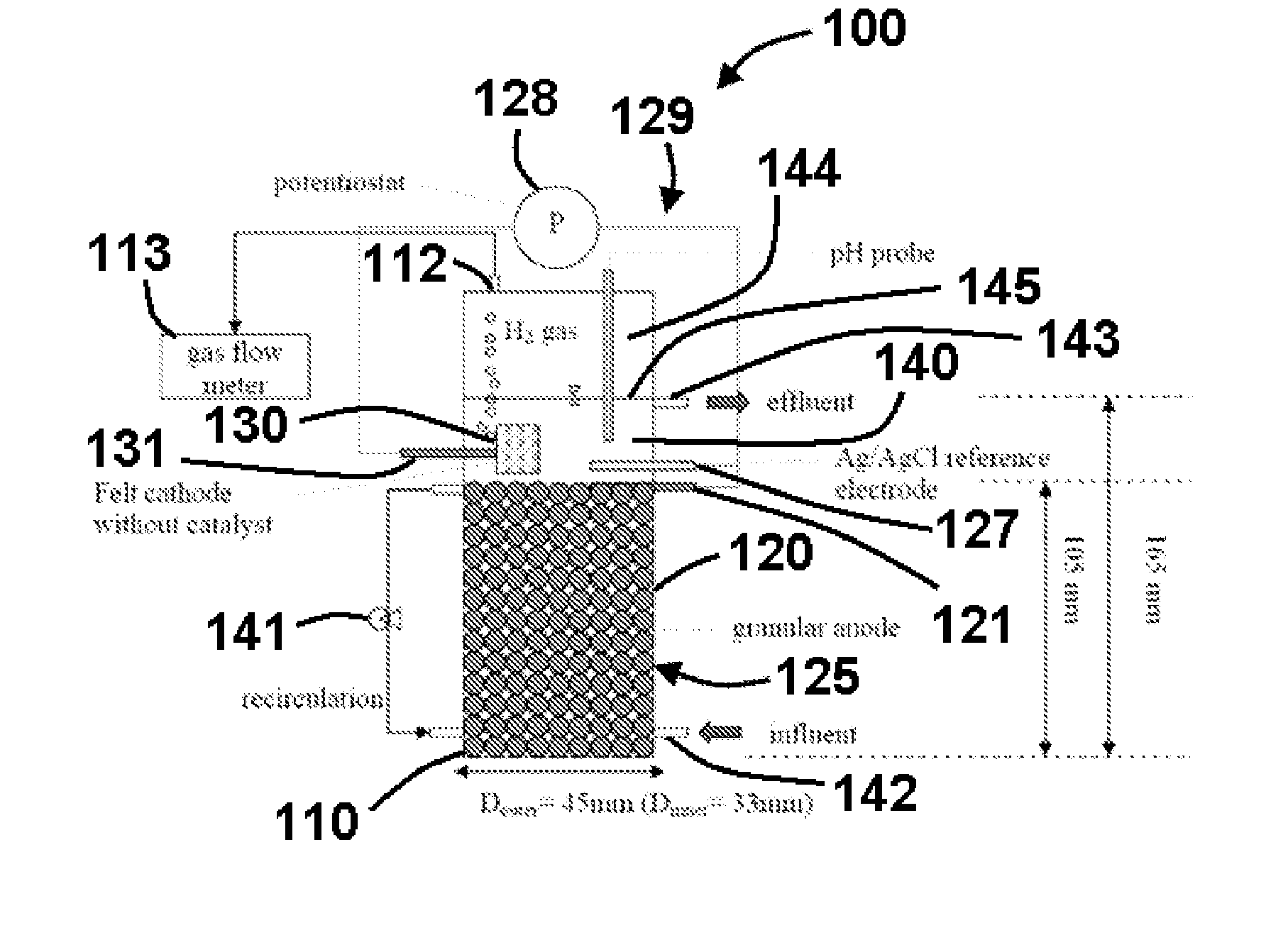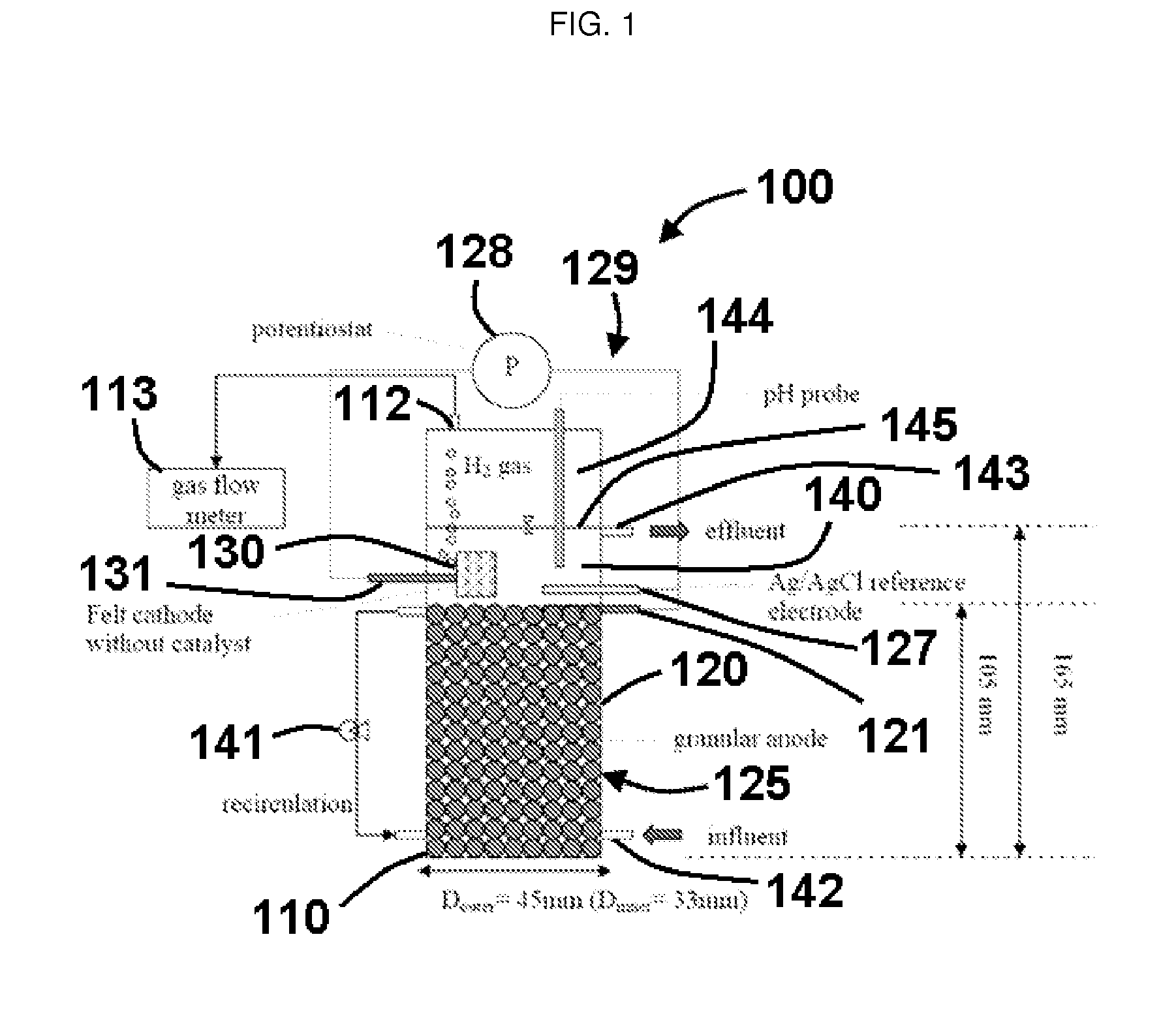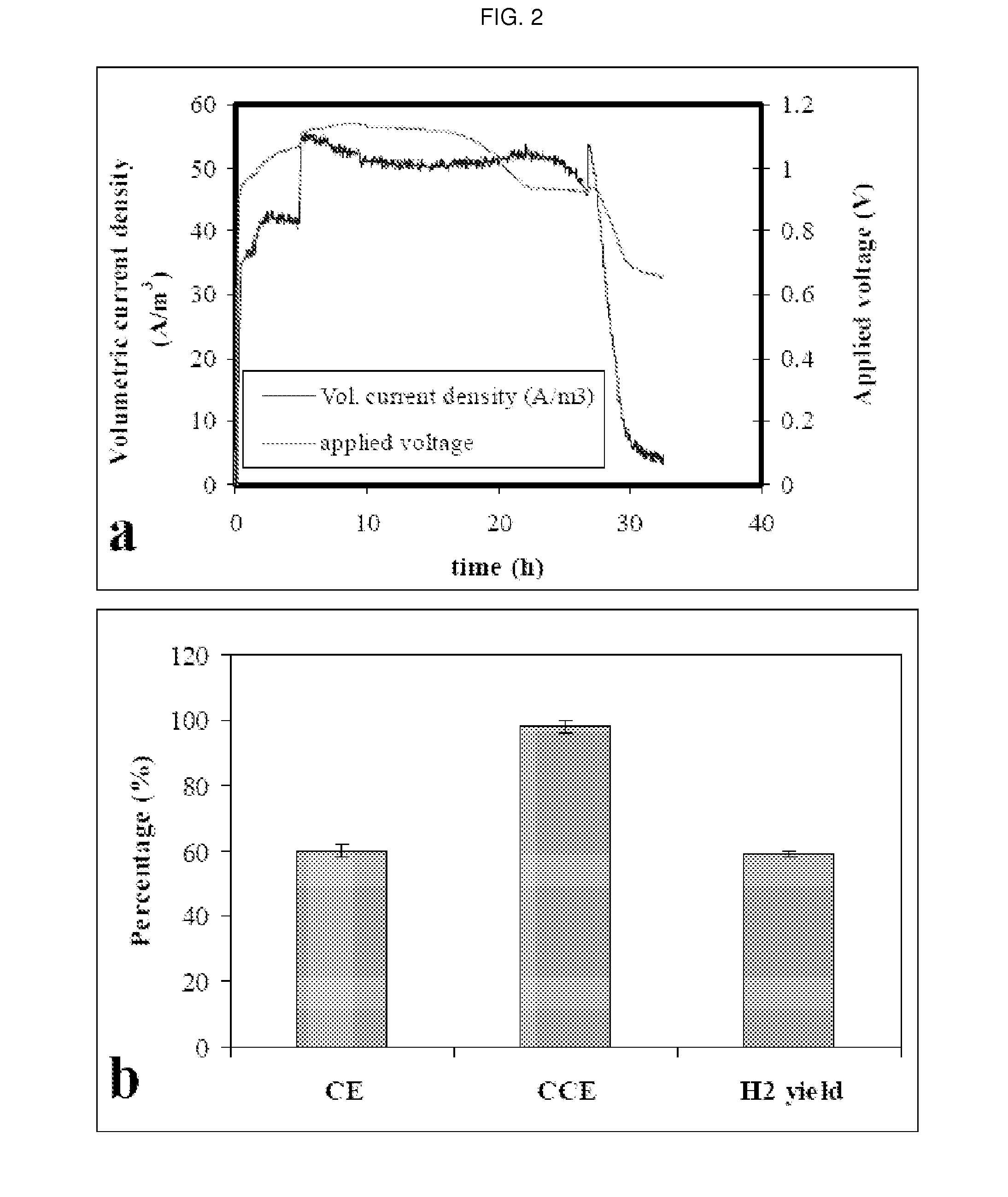Microbial Electrolytic Cell
a technology of electrolysis cell and microorganism, applied in cell components, electrochemical generators, enzymology, etc., can solve the problems of increasing the ohmic loss of electrical potential undesired, reducing the cce to 6-33%, and generally not being practicable in field applications
- Summary
- Abstract
- Description
- Claims
- Application Information
AI Technical Summary
Benefits of technology
Problems solved by technology
Method used
Image
Examples
example one
[0078]In a specific exemplary embodiment, an MEC comprised a glass cylinder with a diameter of 4.5 cm and height of 21.6 cm. Graphite rods (OD 0.8 cm, McMaster-Carr, USA) were cut into 2-3-cm long pieces and packed in the single cell up to a height of 10.5 cm to form the anode bed. The total volume of the single MEC was 161 mL, the empty-bed working volume was 140 mL, the effective working volume was 122 mL (excluding electrode volume), and gas headspace was 21 mL. The reported volumetric current density or volumetric H2 production rate is based on the empty-bed working volume of 140 mL. The average specific surface area of the granular anode was 4.15 m2 / m3 of the empty-bedworking volume. Carbon felt (#43199, Alfa Aesar, MA, USA) without a chemical catalyst was used as the cathode, and its geometric surface area was 21.8 cm2.
[0079]To connect the electrodes, graphite rods (OD 0.4 cm and length 5.4 cm) were inserted into the top areas of the granule anode, and the cathode felt was pen...
example two
[0089]In the present example it is demonstrated that a large geometric surface area formed by the use of many individual graphite fibers packed or bundled into a fiber bundle provides a high H2 production rate in the MEC. The large geometric surface area produces a high ratio of ARB-biofilm density to MEC system volume. The electrode surface area must be large enough for ARB biofilm to form (at least larger than 1-2 μm), and electrode must have a surface areas as large as possible per reactor volumes, since the ARB biofilm is the catalysts for acetate oxidation on electrode.
[0090]FIG. 4 illustrates the upflow-type single-chamber MEC that was used to test the use of graphite small-fiber bundles as anodes for MECs. The total volume of the MEC was 145 mL, and the working volume was 125 mL. The volumetric current density or volumetric H2 production rate is reported herein based on the working volume of 125 mL. Three bundles of the graphite fiber were used as the anode and one bundle was...
PUM
 Login to View More
Login to View More Abstract
Description
Claims
Application Information
 Login to View More
Login to View More - R&D
- Intellectual Property
- Life Sciences
- Materials
- Tech Scout
- Unparalleled Data Quality
- Higher Quality Content
- 60% Fewer Hallucinations
Browse by: Latest US Patents, China's latest patents, Technical Efficacy Thesaurus, Application Domain, Technology Topic, Popular Technical Reports.
© 2025 PatSnap. All rights reserved.Legal|Privacy policy|Modern Slavery Act Transparency Statement|Sitemap|About US| Contact US: help@patsnap.com



